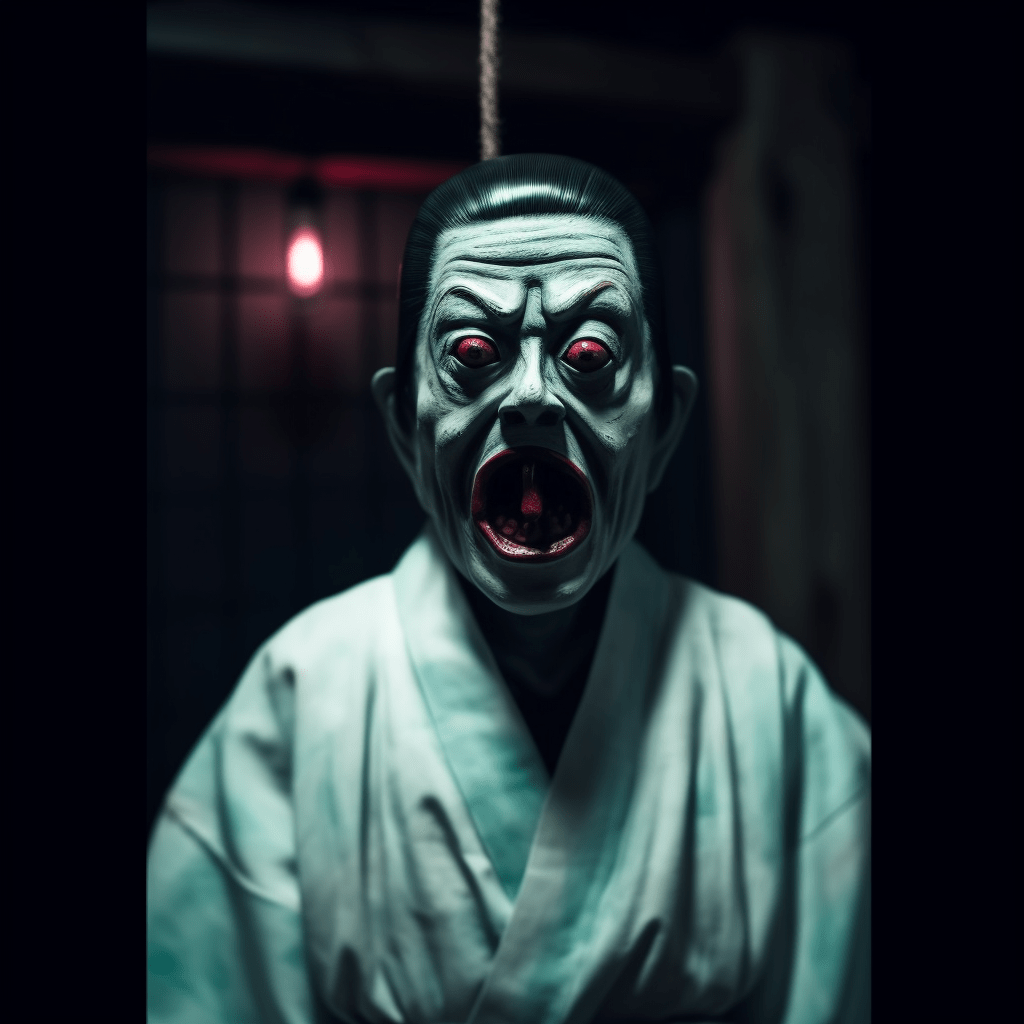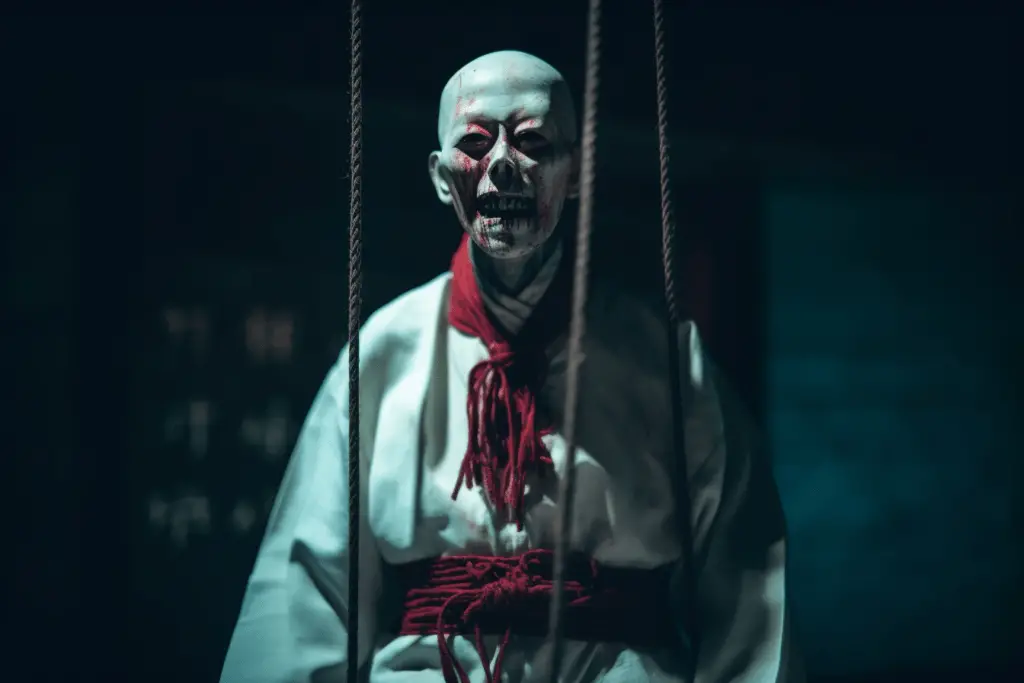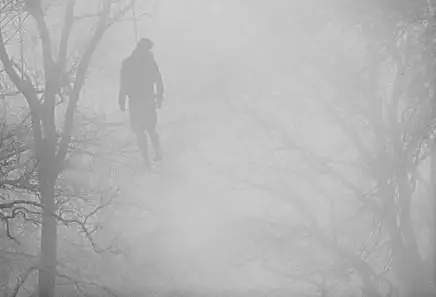Share the Lore!
By: Alex Postrado
The Suicide Ghost of Nightmares
In every folklore, there are ghosts — and in Chinese folklore, there are plenty!
Similar to other cultures, traditional Chinese people understand ghosts as the spirit form of anyone who has died — whether human or animal.
And the existence of this belief in Chinese culture is widely recognized as an “extension of ancestor worship” — rooted in the age-old concept of an afterlife. In other words, the belief that “death is not the end” — rather the beginning of a brand new journey.
As comforting as that might sound, though, the idea of ghosts existing in the mortal plane could be fairly creepy.
For that reason, ghosts remain a restless figure — alongside vampires and the undead — in the horror scene.
In China, stories about ghosts first startled the masses during the Shang Dynasty. And to combat people’s fear of the dead returning to haunt the living as spirits, the ancient Chinese put in place an elaborate burial practice to supposedly prevent any potential ghostly manifestation.
Failure to observe these rites, however, could put you at risk of a spectral visit!
And if that is the unfortunate fate that is handed to you, then you better hope it is not the diao si gui that awaits you!
Its looks? Horrifying.
Its story? Even more!
And if you are particularly unnerved by the concepts of suicide, execution, or depression, then the diao si gui isn’t the ghost that you would want to meet.
Ghosts in Chinese Folklore
Ghosts have existed in Chinese culture as early as 221 BCE, during the pre-Qin Dynasty.
Back in those days, tales mentioning any ghostly encounters were only spread via word of mouth.
But, as people began to explore literature more, the Shan Hai Jing — a miscellanea of fairy tales and fables, otherwise known as “Classic of Mountains and Seas” — came out.
It was the oldest ghost-related work in all of China — the piece of literature that commenced the rise of Chinese ghost culture.
Though the author of the Shan Hai Jing remains anonymous — unknown, much like the time of its creation — there is a general consensus among scholars that it was neither written by a single person nor finished in a single period of time.
Nevertheless, the collection was greatly credited for the development of the ghost — or guei — concept in China.
The word guei — alternatively written as kuei, kui, or gui, depending on the region — translates, in English, to “demon” or “ghost“.
In traditional Chinese, however, it particularly refers to a spirit that plagues the living with either misfortune or sickness — and in worse cases, even death.
So, generally, guei are known to be malicious by nature.

There are a handful of ways guei can be categorized — one of which is by dividing them into several types that cater to their distinct attributes.
The spirits of people who lived a life of greed are called the e gui. In English, they are called the “hungry ghosts“, after their punishment of having to suffer “an insatiable hunger” for all of eternity.
The shui gui, on the other hand, are ghosts of people who died from drowning, but whose bodies were never found. Because they were never given a proper burial, their souls come back to draw other swimmers into their own watery graves.
Speaking of graves, the ghosts known as jiangshi are less like actual ghosts and more like zombies that rose from their graves. Also called “hopping ghosts” for their stiff, hopping-like way of walking, jiangshi kill their victims by slowly sucking up their qi — or “life force“.
These ghosts are only three of the best-known ghosts in Chinese folklore. As we all know, there are still plenty of others.
But one that pops up — arguably — quite as often as these three is the diao si gui — a troublesome ghost that also goes by the moniker of “the hanged ghost“.
What is the Diao si Gui?
In Chinese folklore, it is believed that the manner in which a dead person is buried could consequently decide whether or not their spirit would come back to haunt the living.

In a similar fashion, should their spirit end up returning, the manner of the person’s death subsequently determines their purpose for doing so.
So, if someone dies and their body ends up missing, neglected, or stripped of the formal burial rites, there is no question that their spirit would return.
In the unfortunate case, however, that they died by hanging either from execution or suicide, then they would come back as a diao si gui.
One of the said purposes of the diao si gui for coming back to the mortal world is to haunt the place of their death.
It would lurk in there, waiting for the perfect time to attack.
And when a human passes by the place, the diao si gui would, then, get on its next purpose — which is to scare the wits out of its poor victim!
You see, the diao si gui’s visage isn’t exactly a delightful sight to look at.
As a matter of fact, this ghost looks like an absolute nightmare!
It is said to have a long, red tongue, lolling out of its mouth — the reason why the diao si gui is also known as the “red-tongued ghost”.
Moreover, this spooky ghost also appears hanging down from a noose on the ceiling, with its feet “dangling loosely in the air” — further cementing its title as the “hanged ghost” of Chinese lore.
It is said that the slower and the more agonizing the death of a person is — if it is done by hanging — the more likely they are to become a diao si gui.
And once they do, they will also be in for the third purpose of the diao si gui’s return, which — perhaps — is the most chilling of it all.

What Makes the Diao si Gui So Scary?
Do not make eye contact.
That is the most important thing that you need to keep in mind if you ever come across the diao si gui.
As the lore says, this ghost will try to corrupt your mind by whispering into your ear the reasons why you should join it in death.
Its power — the gift of extreme persuasiveness — is a curse to us, the living.
And while the diao si gui is capable of hypnotizing any human to do its behest, nothing is really carved in stone unless the mortal meets the eyes of the hanged ghost.
If that happens, the person will be “lured into the same fate” — in this case, hanged by their own hands, but controlled by the whispers of the diao si gui.
In some tales, the victims are only confined to those who make the fateful mistake of wandering by the place where the diao si gui died.
While in other stories, the diao si gui is far more dangerous — unbounded by its place of death and is actively searching for a soul to pull into the afterlife.
All the same, most believe that the impetus that makes the diao si gui desperate in convincing a human to take its own life is the promise of freedom in exchange for it.
That, as the story goes, the hanged ghost will be “released from its curse” and given peace once it successfully finds another spirit to take its place as the new diao si gui.

Regardless of what the ghost’s motivation is, the lore of the diao si gui is undeniably a nod to Chinese culture’s misgivings about death — especially, one that stems from the desire to harm one’s own self.
Furthermore, the whispers of the diao si gui could also stand-in for the intrusive thoughts that occasionally drop by to pester the minds of already struggling people.
That is to say, the voice that urges you to quit in times when it feels like the end.
It might be a messed-up thing to think about, but thoughts like this sure sound like a ghost sometimes.
However, as we learned from the story of Chinese folklore’s hanged ghost, nothing is really over until we decide to look death right in the eye.
References:
Guei - Chinese Religion What Kind Of Ghosts Haunt Chinese Folklore? The World Of Chinese Ghosts Hanged Ghost (Diào Sǐ Guǐ)
